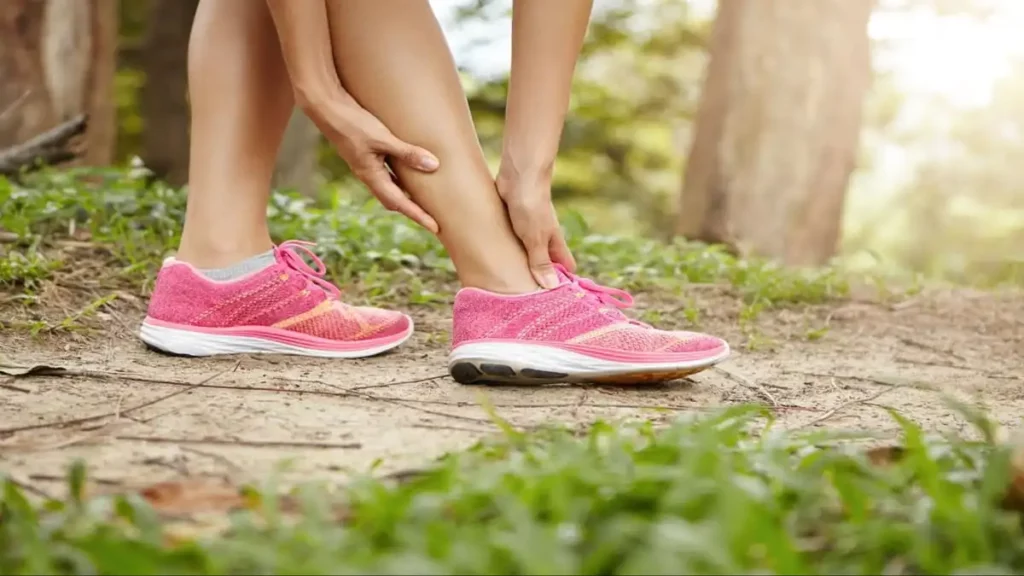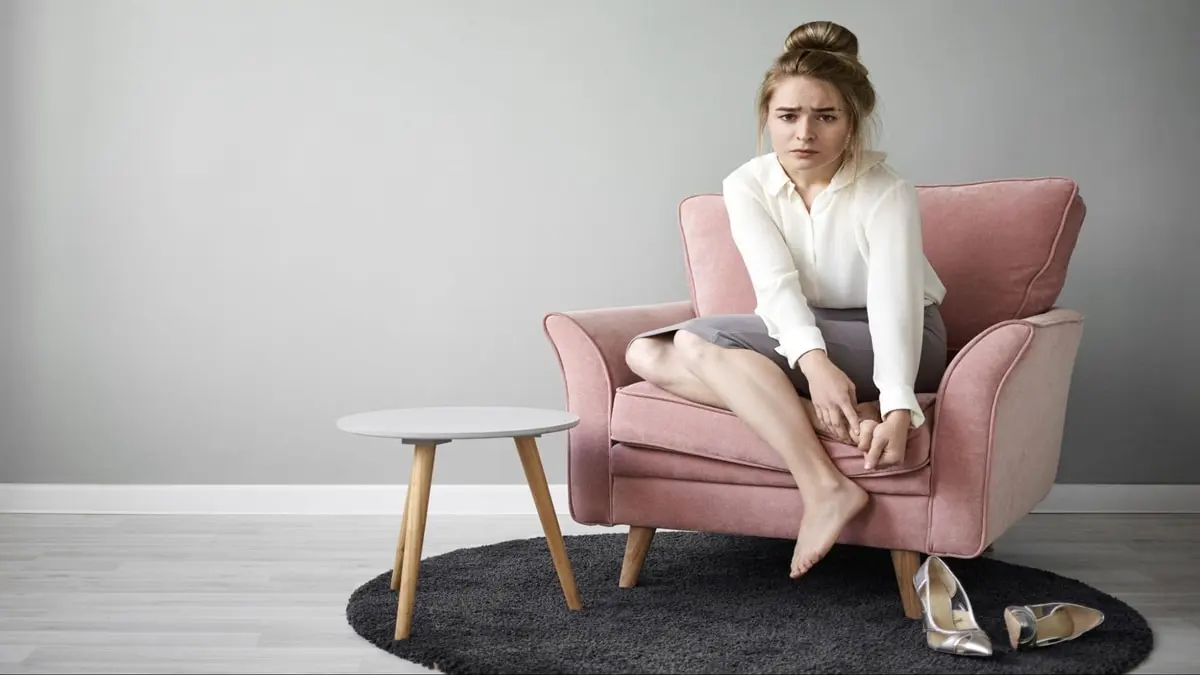Can Shoes Cause Plantar Fasciitis? Plantar fasciitis, a common foot ailment characterized by heel pain, can be exacerbated by certain types of footwear. Shoes that lack proper arch support or cushioning, such as unsupportive flats or high heels, can contribute to the development or worsening of plantar fasciitis.
However, footwear alone is not always the sole cause, as factors like overuse, high-impact activities, and foot mechanics also play a role. Managing plantar fasciitis often involves a combination of treatments, including proper footwear, stretching exercises, and in some cases, medical intervention.
Your choice of footwear is crucial for foot health. The question that arises here is Can Shoes Cause Plantar Fasciitis? Proper shoes offer support and comfort, while ill-fitting ones can lead to issues like plantar fasciitis. Let’s explore the relationship between footwear and plantar fasciitis by guiding your foot health.
Can a New Pair of Shoes Cause Plantar Fasciitis?
Plantar Fasciitis as a Foot Condition
There are many different types of plantar fasciitis, but one of the most common ailments is inflammation of the plantar fascia. This is a crucial tissue for the foot’s structure. Symptoms include intense heel pain, often experienced upon waking or after strenuous activity. Understanding this condition is vital for making informed footwear choices.
Plantar Fasciitis Development Factors:
The factors contributing to Plantar fasciitis include repetitive stress from activities such as running or standing for long hours, wearing improper footwear, age and weight, biomechanical issues, and sudden changes in activity levels. Recognizing these factors is vital for prevention and management.
Impact of New Shoes on Foot Health
New shoes can be exciting, but their impact on foot health is essential to consider. Factors like fit, arch support, cushioning, and shoe type play a crucial role. Abruptly transitioning to new shoes can potentially strain the plantar fascia, so gradual adaptation is advisable to prevent discomfort or injury.
What type of shoes causes plantar fasciitis?

Footwear that May Trigger Plantar Fasciitis
Shoes that can contribute to plantar fasciitis often lack essential features like arch support, cushioning, and proper structure. Inadequate arch support can strain the plantar fascia, while a lack of cushioning increases foot stress. Poorly fitting or rigid shoes can also exacerbate the condition. Choosing footwear with these characteristics is essential for preventing plantar fasciitis.
Preventing Plantar Fasciitis with Shoe Features:
Select shoes with good arch support, sufficient cushioning, a proper fit, and a supportive heel counter, and consider your foot’s arch type. Look for removable insoles, shock-absorbing midsoles, and breathable materials. Choose activity-specific shoes and regularly assess shoe conditions to prevent plantar fasciitis and maintain foot health.
Tips for Selecting the Right Shoes:
If you have a history of foot problems or are prone to conditions like plantar fasciitis, making informed choices when selecting shoes is crucial. Here are some practical tips to help you find the right footwear:
- Consult a professional for personalized advice.
- Regularly assess your foot condition.
- Consider custom orthotics if recommended.
- Choose activity-specific footwear.
- Prioritize arch support, cushioning, and a proper fit.
- Look for a supportive heel counter.
- Seek guidance for specialized activities.
- Replace worn-out shoes promptly.
How often should you change your shoes with plantar fasciitis?
Managing plantar fasciitis involves not only choosing the right shoes but also understanding when to replace them.
Shoe Maintenance and Replacement Significance
Proper shoe maintenance and timely replacement are essential to managing plantar fasciitis. Worn-out or unsupportive shoes can worsen the condition, impacting foot health and comfort.
Replace Your Shoes When You Notice:
Some indications that you should replace your shoes include visible wear and tear, loss of cushioning, changes in comfort, uneven wear patterns, decreased arch support, alterations in fit, persistent pain, sole compression, increased instability, and signs of odor or mold. Recognizing these indicators is vital for managing plantar fasciitis effectively.
Balancing Shoe Longevity with Foot Health
Balancing shoe longevity with foot health is crucial. Regularly assess your shoes for signs of wear and consider timely replacement to prevent worsening foot problems, particularly with conditions like plantar fasciitis. Prioritizing foot health ensures continued comfort and mobility.
Does Wearing Shoes Make Plantar Fasciitis Worse?

Shoes’ Impact on Plantar Fasciitis Symptoms
Plantar fasciitis symptoms can be greatly influenced by the type of shoes worn. Unsupportive or improperly fitting shoes can make the discomfort worse, but supporting shoes that cushion and support the arch might ease it. For plantar fasciitis management and foot health, it is crucial to choose the right foot health.
Barefoot vs. Shoe-Wearing Considerations
Choosing between going barefoot and wearing shoes is a critical decision for those with plantar fasciitis. Here’s a breakdown of the pros and cons:
Going Barefoot:
Pros:
- Natural foot movement and muscle strengthening.
- Improved proprioception.
- Reduced risk of uncomfortable shoes exacerbating symptoms.
Cons:
- Minimal protection, especially on hard or uneven surfaces.
- Lack of arch support and cushioning, potentially straining the plantar fascia.
- Not suitable for all environments or activities.
Wearing Shoes:
Pros:
- Provides support, cushioning, and protection, reducing strain on the plantar fascia.
- Offers arch support for comfort.
- Suitable for various activities and environments, including work and sports.
Cons:
- Requires careful shoe selection for proper support.
- May lead to discomfort if shoes are ill-fitting or unsupportive.
- Shoes can degrade over time, necessitating replacement for continued effectiveness.
Managing Footwear and Plantar Fasciitis
- Foot Assessment: Professionals assess your foot structure, gait, and plantar fasciitis severity for personalized advice.
- Orthotic Recommendations: They can recommend or create custom orthotic inserts tailored to your specific needs.
- Footwear Guidance: Professionals suggest suitable footwear and help you avoid ill-fitting or unsupportive options.
- Treatment Planning: They develop comprehensive treatment plans, including footwear recommendations, for effective plantar fasciitis management.
Closing Thoughts
A painful inflammation of the plantar fascia known as plantar fasciitis results in excruciating heel pain. This raises the query Can Shoes Cause Plantar Fasciitis? Choosing the correct shoes is essential for controlling this disease; look for ones with sufficient cushioning and arch support. For continued support, it’s critical to maintain your shoes properly. Understanding the elements that either cause or shield against plantar fasciitis is also essential.
Seeking advice from healthcare professionals, who can provide personalized recommendations, foot assessments, and orthotic solutions, is highly recommended for effective management. Remember, your choice of shoes directly impacts your foot health, so prioritize them to ensure they support you on your life’s journey.










